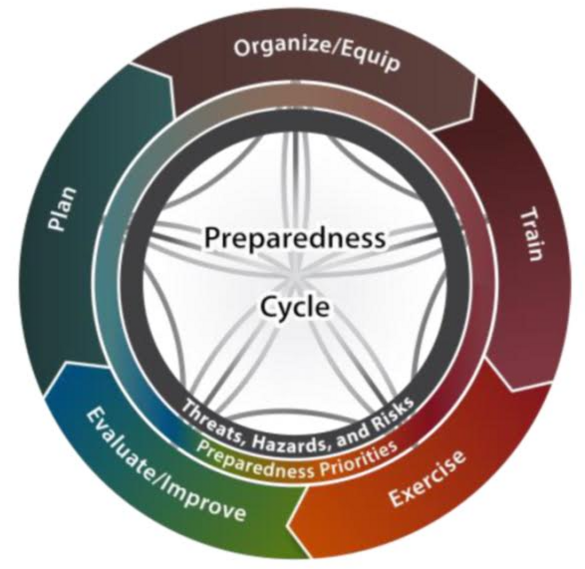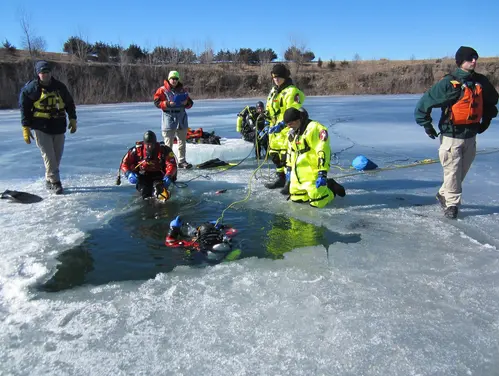On this page...
The Preparedness Cycle

The Preparedness Cycle is an important organizational tool that is comprised of five phases: preparedness, prevention, response, recovery and mitigation. There is a continuous cycle of planning, organizing, training, equipping, exercising and evaluating emergency preparedness activities that allows organizations to increase their overall capacity and resiliency to experience and recover from any type of disaster.
Back to topPlanning
Planning for emergencies ensures that emergency services, local authorities and other organizations better communicate and coordinate efforts, improving disaster response and post-disaster recovery. Federal, state, and local planning provides safety and security for the public under threat of a full spectrum of potential disasters.
Section 29C of the Iowa Code provides the authority and lists the responsibilities of Iowa Homeland Security and Emergency Management and the county emergency management commissions to plan for emergencies. In addition, the following federal laws and regulations shape emergency planning: Emergency Planning and Community Right-to-Know Act; Robert T. Stafford Disaster Relief and Emergency Assistance Act; Criteria published by the Nuclear Regulatory Commission; and the Federal Emergency Management Agency’s radiological emergency response plans.
Back to topTraining
Training prepares state and local first responders to prevent, protect, respond to and recover from a variety of emergency situations. HSEM has worked with its many partners in the delivery of courses to thousands of responders at all levels of government throughout the state. Learn about available training.
Back to topExercise
The goal of the Iowa HSEM exercise program is to test the plans and practice the training in a simulated real life environment to better prepare for actual emergencies.
The exercise program is an integral component of the State Planning, Training and Exercise (PTE) Strategy and is based on FEMA’s Homeland Security Exercise and Evaluation (HSEEP) doctrine. It takes input from the State’s Threat and Hazard Identification and Risk Assessment/Stakeholder Preparedness Review (THIRA/SPR), AARs from actual responses and previous exercises, grant requirements, leadership priorities, major event planning, awareness campaigns, and emerging issues in the contemporary operating environment.
All HSEM exercises are designed using the building blocks of the FEMA mission areas and core capabilities focusing on the specific objectives leaders want to accomplish during the exercise.
Exercise-Related External Links:
FEMA Exercise information
FEMA Homeland Security Exercise and Evaluation Program (HSEEP)
FEMA exercise and preparedness tools
FEMA Preptoolkit
CISA Training and Exercise information
